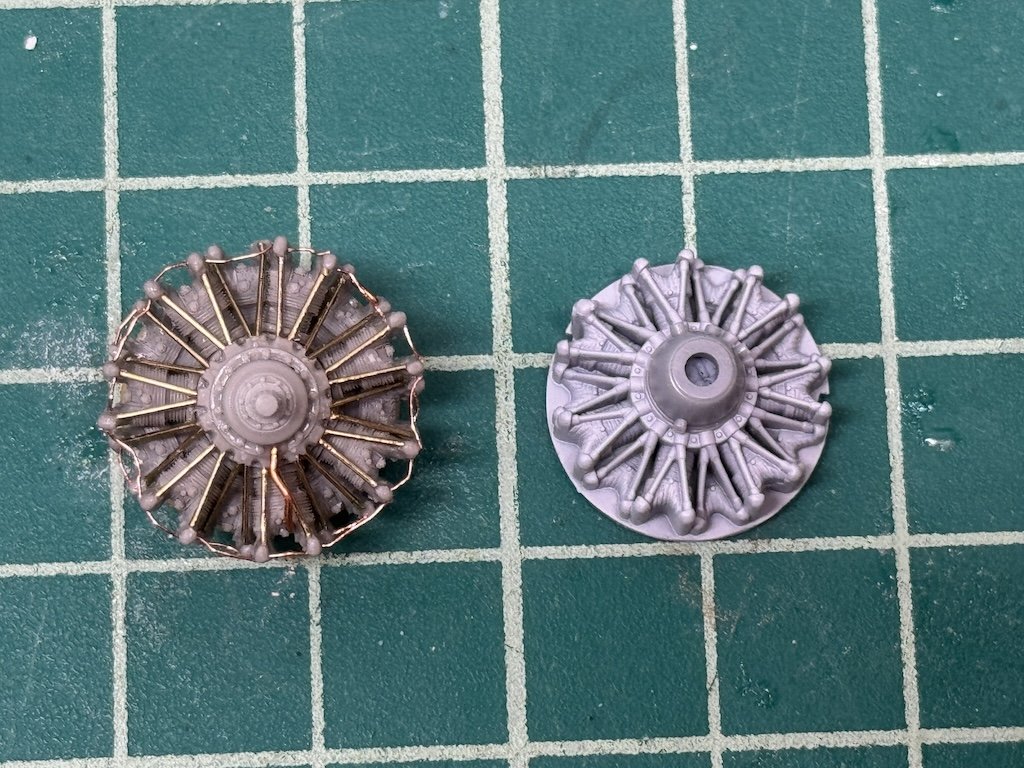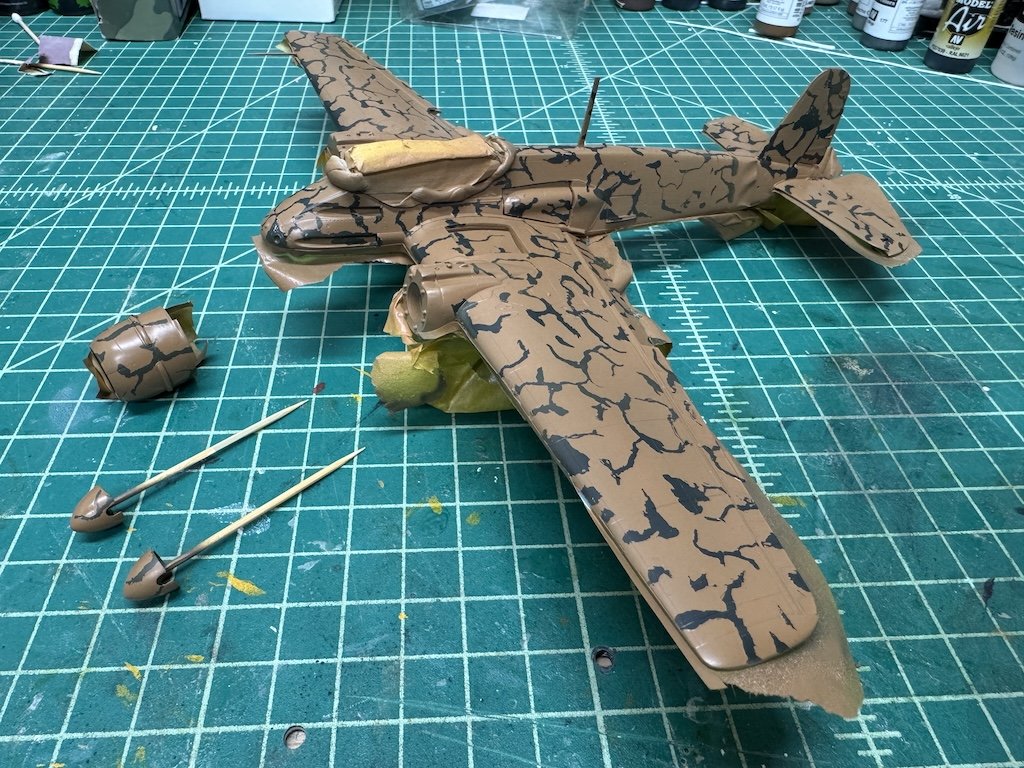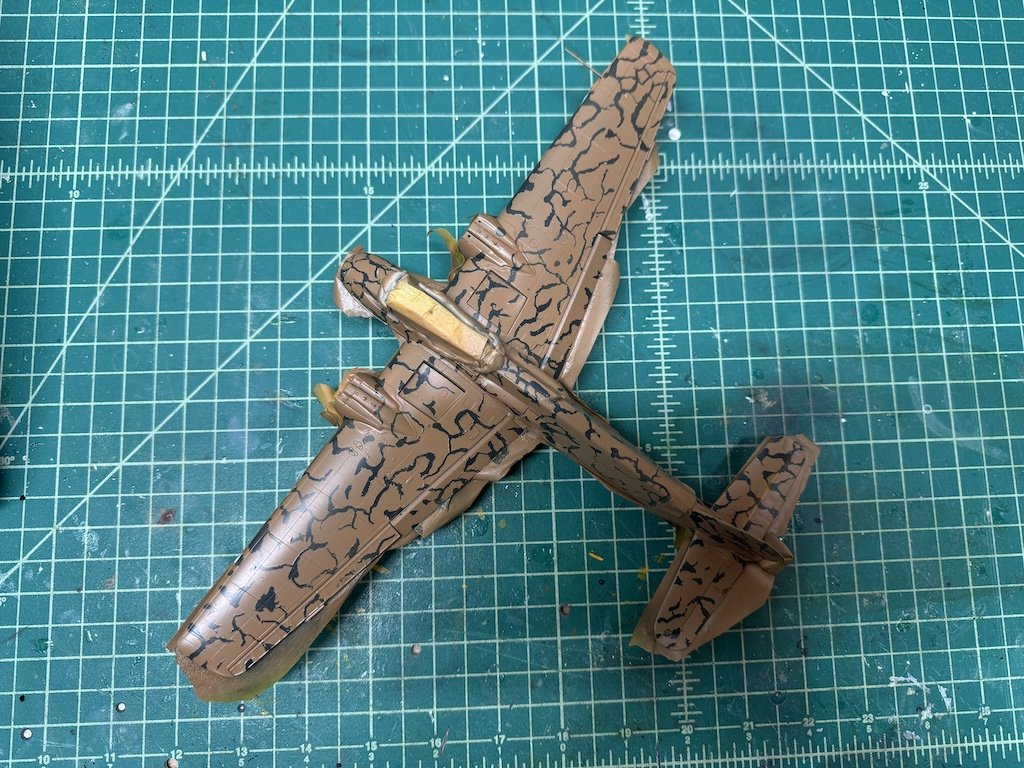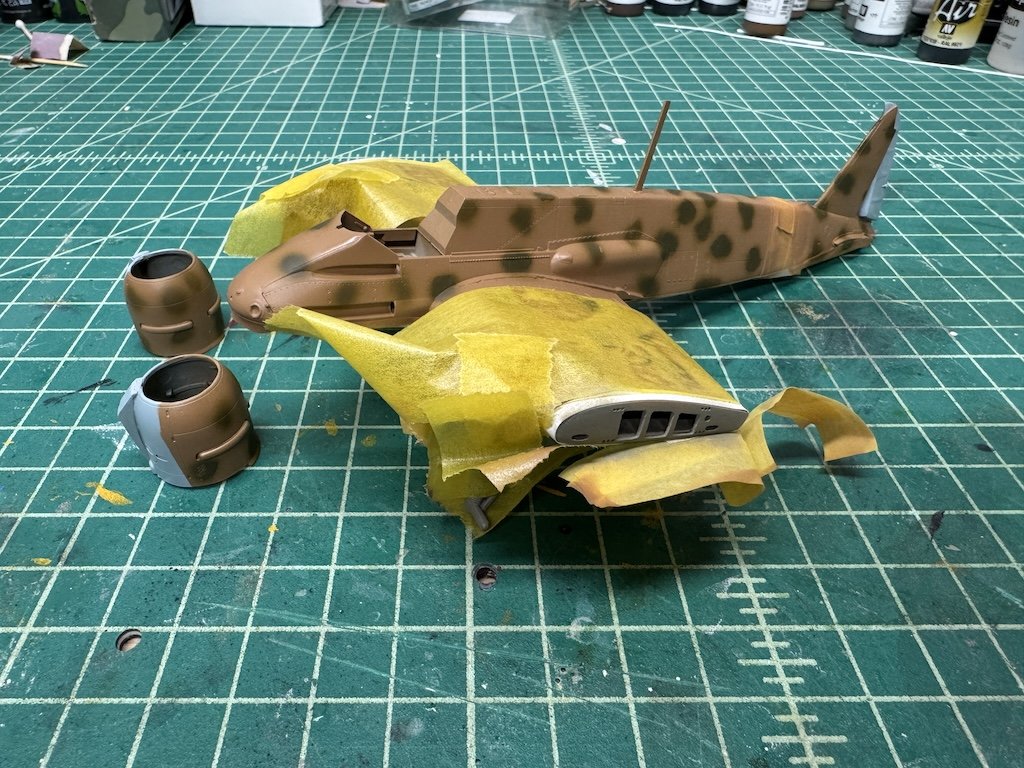-
Posts
4,508 -
Joined
-
Last visited
Content Type
Profiles
Forums
Gallery
Events
Everything posted by Landlubber Mike
-
Thanks guys! I spent a bunch of time the past few weeks working on the Opel Blitz truck for the second diorama. I had to wait for some brass parts to come in to be able to scratch some added details to the truck bed, so started a 1/72 plane model in the meantime to keep busy. I'll probably post it in the next few days.
-
I thought I had replied earlier, but just wanted to say I love the build! Really great job Alan!
- 78 replies
-
- Derfflinger
- Flyhawk
-
(and 2 more)
Tagged with:
-
I tend to agree with you Alan - the 1/700 kits are much easier to move around and certainly take up less room. There's also much better range of subjects in 1/700 than 1/350. I still have some 1/350 kits for subjects I really want to model, but most of my ship kits are 1/700. I do have a 1/200 Bismarck with full Pontos upgrades, etc. in the stash - now that is a big kit! I've been thinking about putting it up for sale as well. I really like your Derfflinger. You've done a really great job on it!
- 78 replies
-
- Derfflinger
- Flyhawk
-
(and 2 more)
Tagged with:
-
Looks really good. You can see all the great little details from this kit. Going to be a nice model when you're done.
- 78 replies
-
- Derfflinger
- Flyhawk
-
(and 2 more)
Tagged with:
-
I'm slowly getting closer to the finish Iine. I spent some time detailing out the Vector engines for the first model according to some pictures of the Gnome-Rhone 14M engines. The Vector engine is on the left, and the kit engine (which is pretty nice) is on the right. I'm at the painting stage now. I first started with the second Hs 129, and used a 0.18mm airbrush to brush on the green splotches: I then tackled the first Hs 129. I had used Mr. Hobby paints for the undercoat European scheme (I figured Mr. Color would have a strong adhesion than Vallejo). Then I sprayed a light coat of Mr. Surfacer semi-gloss for a little added protection. I struggled with how to do the camo scheme, and eventually settled on using liquid masks. I did a bunch of tests first using Mr. Hobby - Mr. Masking SOL R and Vallejo Liquid Mask. I tried them both out with sprays of Mr. Color and Vallejo paints on top as I wasn't sure if the Mr. Color would dissolve the Vallejo. Turned out both were completely fine and compatible with each other, with Mr. Color on Vallejo's mask and Vallejo on Mr. Hobby's mask. I ended up going with Vallejo as it was slightly easier to apply as it's a little less viscous compared to Mr. Masking. One tip I found online was to paint masking solutions using silicone brushes. They made it much easier to apply - just apply to a section, wipe the brush (because the masking solution starts drying pretty quickly), and repeat. Still took hours to do, but well worth it with no aggravation. I was really surprised how easy it was. One thing to note is that I read that it's better to not leave masking solutions on for too long. Some said a week or two and it was hard to get the mask off. Others said they've left masks on for months and had no problems. I ended up going with Mr. Color for the Mr. Color RLM 79. I have the Vallejo equivalent to do touchups as I find Mr. Color doesn't brush as easily. Anywhere here are the pictures. Thanks for looking in!
-
I have an Iwata Eclipse CS as my workhorse airbrush with an Iwata compressor. Really great products.
- 50 replies
-
- academy
- Admiral Graf Spee
-
(and 5 more)
Tagged with:
-
I'm a big fan of this site precisely because of the build log function. I learn an incredible amount reading through build logs, and really enjoy the camaraderie that develops over a build. If this site moved to just being a virtual museum of finished models, I probably wouldn't visit all that often. You can get that on Facebook and other sites. Where this site really shines is in the build log and community departments. Don't get me wrong, seeing pictures of a completed model can be inspiring and I certainly can appreciate the artistry in a well-made project. I think the gallery function works great to alert people that a particular project is completed and give an overview of the project since I don't have the time to track every build log. Often times though, it seems like those that only post pictures of their completed projects are projecting their egos in a "look at me" and/or marketing kind of way without really contributing to the community by chiming in on other build logs or discussion topics (Chuck's examples about abuses to the gallery system are unfortunate examples of this). Again, I can get that on Facebook and other places that are not really designed to handle compartmentalized build logs. In summary, I think the build log and gallery functions serve good and independent objectives. The rules around both seem fairly reasonable to me.
-
Wow, a lot of work there! I'm not sure I'm going to be willing to put that kind of effort into fixing the hull on mine, but am impressed by your dedication to improve the accuracy!
-
Hi Dan, thanks very much for the suggestion. I considered that approach, as well as just painting everything sand color and hand brushing the green paints (or using artist pencils). I have an airbrush with a very thin nozzle (I think 0.18mm) so I'm going to practice and see if I can make it work. I figure I can always touch up areas by hand brushing if need be.
-
Holy cow Glen, that came out so well!! Your creativity is amazing, not just for the SIB itself, but the overall composition with the display base. Well done my friend! The only problem I see is that you keep upping the bar for yourself. You're making it harder and harder to top your last efforts, but I have faith in you
- 185 replies
-
- Flying Dutchman
- Black pearl
-
(and 2 more)
Tagged with:
About us
Modelshipworld - Advancing Ship Modeling through Research
SSL Secured
Your security is important for us so this Website is SSL-Secured
NRG Mailing Address
Nautical Research Guild
237 South Lincoln Street
Westmont IL, 60559-1917
Model Ship World ® and the MSW logo are Registered Trademarks, and belong to the Nautical Research Guild (United States Patent and Trademark Office: No. 6,929,264 & No. 6,929,274, registered Dec. 20, 2022)
Helpful Links
About the NRG
If you enjoy building ship models that are historically accurate as well as beautiful, then The Nautical Research Guild (NRG) is just right for you.
The Guild is a non-profit educational organization whose mission is to “Advance Ship Modeling Through Research”. We provide support to our members in their efforts to raise the quality of their model ships.
The Nautical Research Guild has published our world-renowned quarterly magazine, The Nautical Research Journal, since 1955. The pages of the Journal are full of articles by accomplished ship modelers who show you how they create those exquisite details on their models, and by maritime historians who show you the correct details to build. The Journal is available in both print and digital editions. Go to the NRG web site (www.thenrg.org) to download a complimentary digital copy of the Journal. The NRG also publishes plan sets, books and compilations of back issues of the Journal and the former Ships in Scale and Model Ship Builder magazines.










